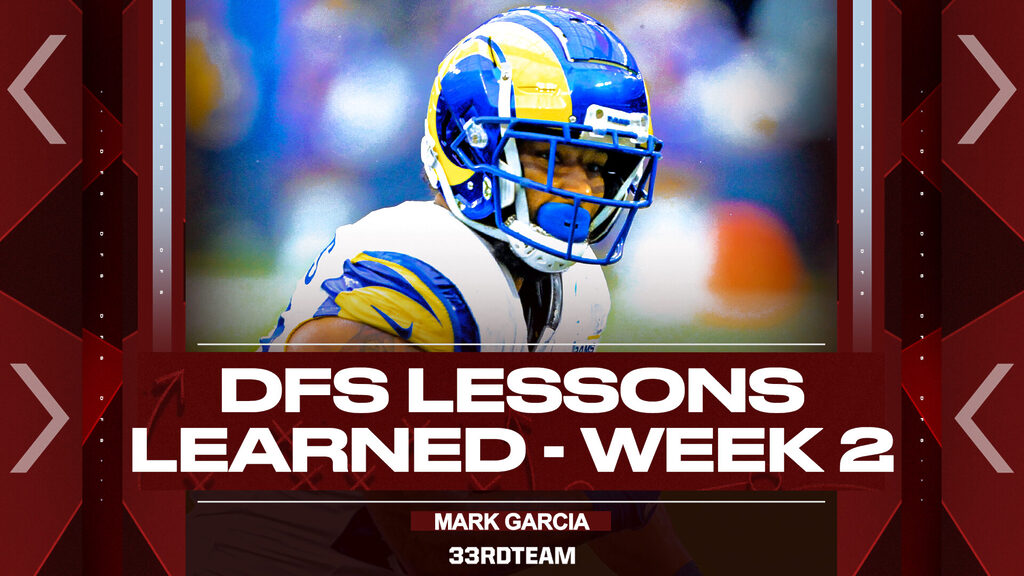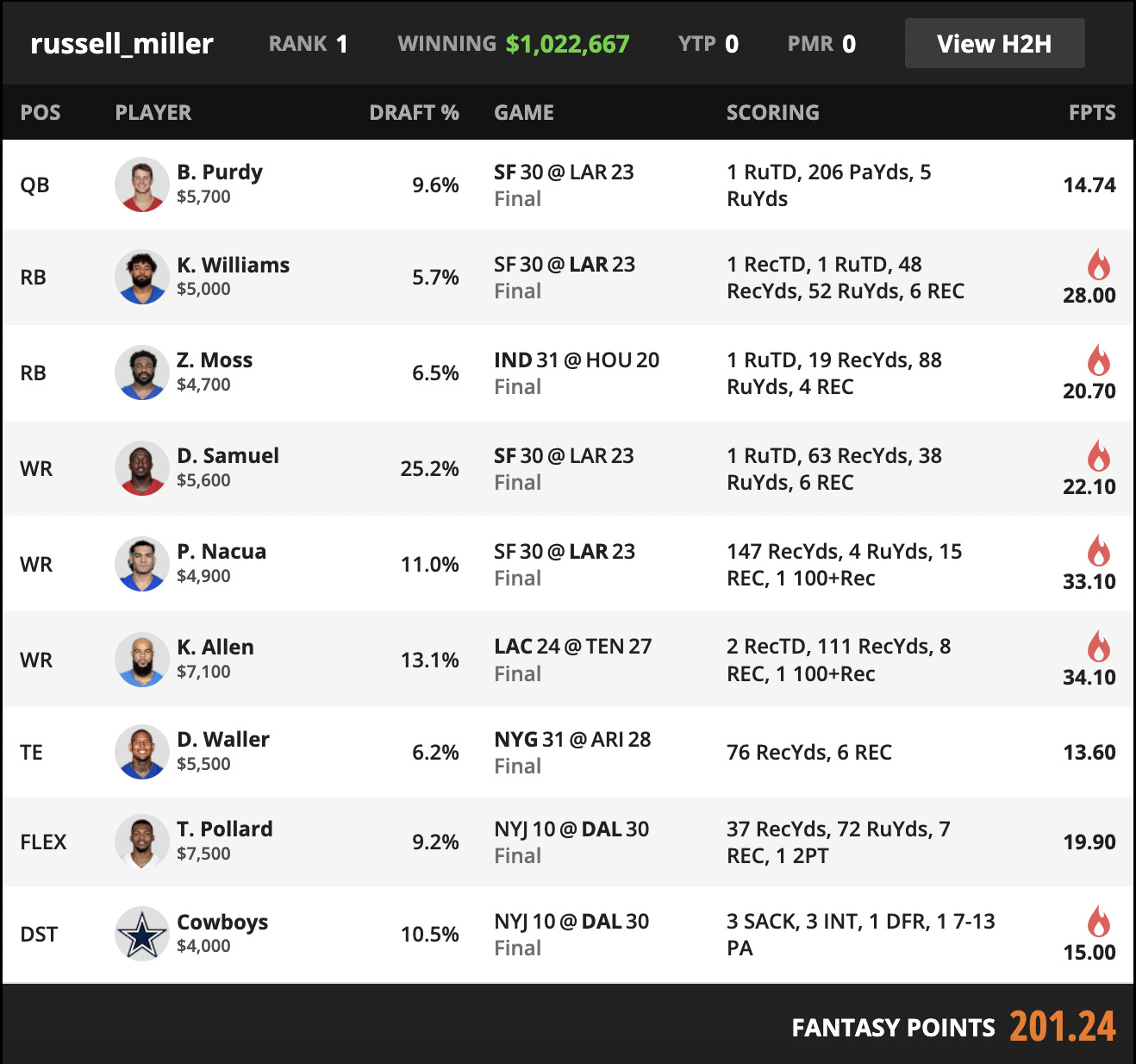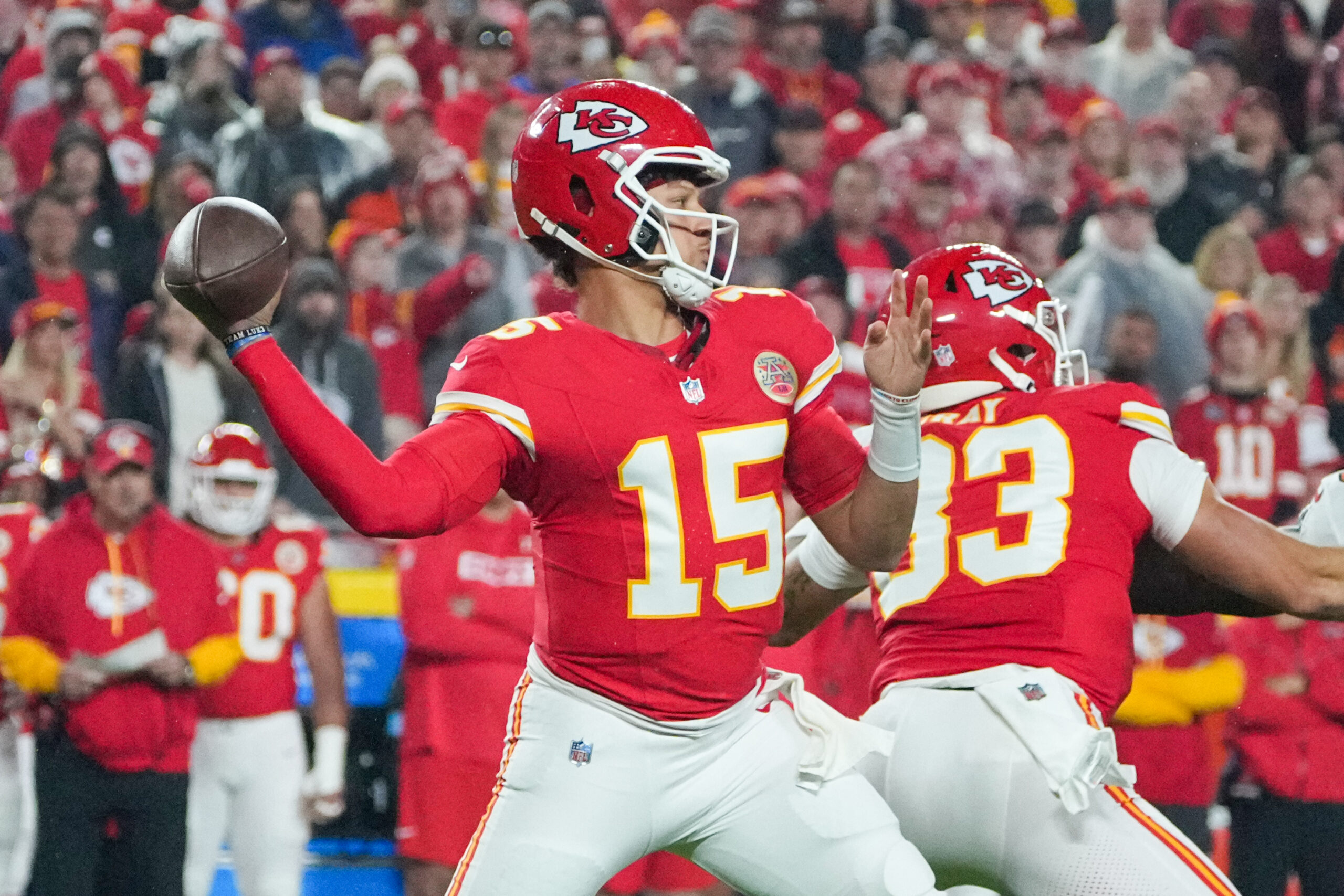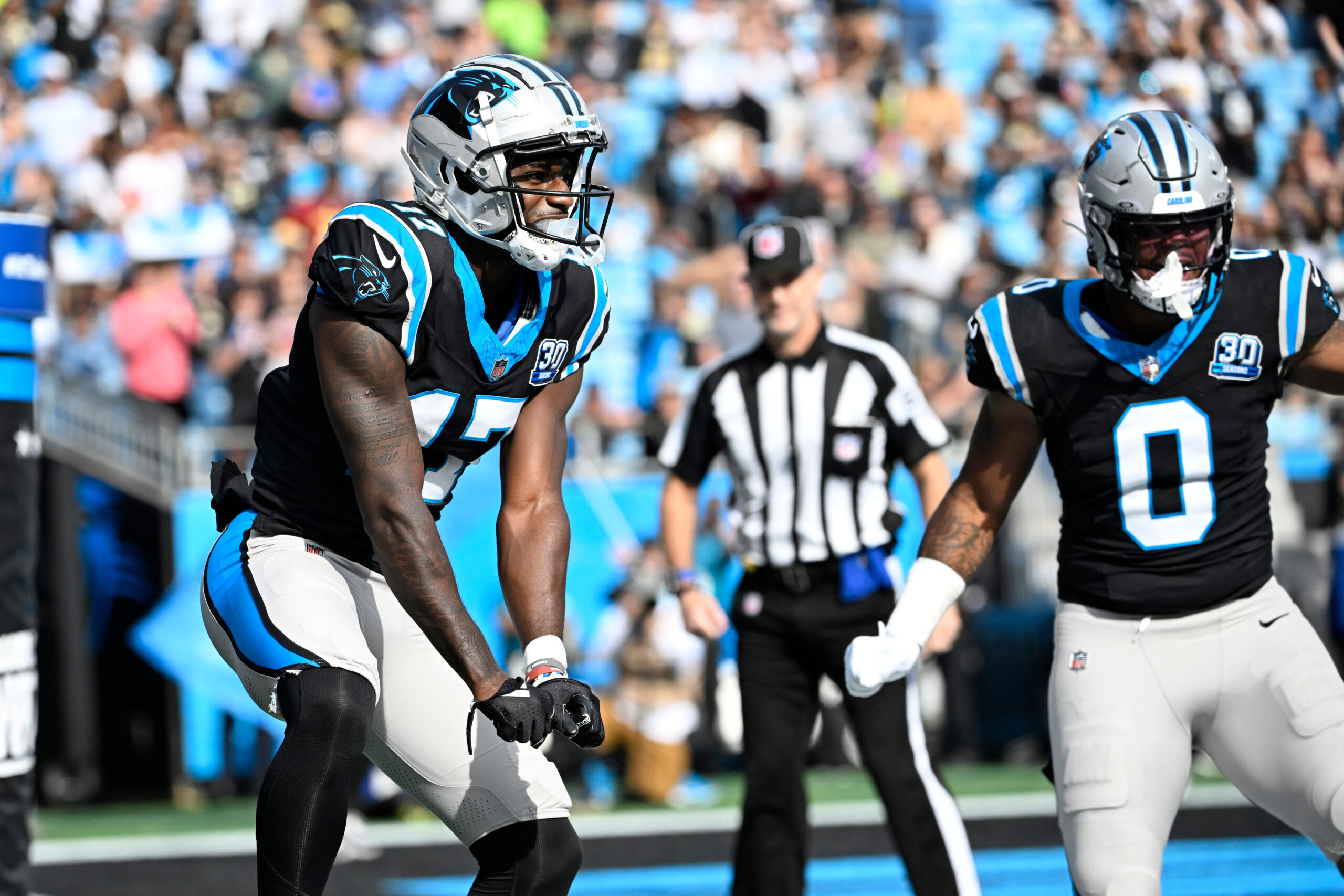Analysis
9/20/23
4 min read
2023 Fantasy Football: DFS Lessons Learned from NFL Week 2

Reflection is an underrated aspect of consistent DFS play. Think about this: How do the top pitchers, top wide receivers or top financial analysts remain on top through the changing dynamics of the game or the markets they play in?
They do so by consistently learning, growing, being open to new ideas and practices, tweaking what works and what doesn’t and changing with the game.
Reviewing your mistakes can give you staying power in any competition. Most of the top DFS players examine their play the following week — so what edge can we gain over even the most die-hard players?
In this piece, we’ll examine the Week 2 slate in its entirety and compare those conclusions with rosters from some of the top players in the game.
Week 2 DFS Lessons Learned
Observations
The field's overconfidence in Week 2 led to some interesting exposure numbers. Many of the week's top raw point-getters were on less than 10 percent of the rosters in play in high-dollar, medium-field GPPs.
That means the field largely overreacted to a one-week sample for things such as team tendencies, snap rates, run-pass ratios and defensive schemes.
Every week, we’ll get more data for our decision-making process. However, we’re still a few weeks away from discerning trends and anomalies. It’s too early to conclude how a team will operate this season.
That allows us to embrace additional variance for another few weeks, smartly leaning into the unknown. We aren’t simply throwing mud at a wall to see what sticks. We’ll examine some ambiguous situations from Week 2 via the roster below.

Roster Examination
DraftKings user russell_miller used multiple layers of game theory to construct his million-dollar roster from Week 2. He won the $555 Millionaire Maker on DraftKings with a score of 201.24.
First, most of the high-game total matchups were played in the early portion of the slate, meaning it was likely where most of the field's interest would flow.
Keenan Allen and Zack Moss were his only two players from the early games. Both held a degree of uncertainty surrounding their expected usage in Week 2 because of questions about the expected run-pass rates for the Los Angeles Chargers due to the run-leaning ways of Kellen Moore’s offense in Week 1.
Playing Allen took a bit of faith, but the projected path to attack the Tennessee Titans and their top-ranked run defense is through the air.
Moss missed last week while recovering from a broken arm suffered in preseason, leaving questions regarding his expected workload in Week 2. The ineffective play from Deon Jackson in Week 1 hinted at a changing of the guard in Indianapolis, so Moss led the league in snap rate and team opportunity share among running backs.
Next, Miller over-stacked a game with legitimate paths to an eruption that also came in rather under-rostered outside of one specific player: Deebo Samuel. The San Francisco 49ers and Los Angeles Rams combined for 53 points.
More importantly, each offense remained highly concentrated. The 49ers almost always run exclusively through Christian McCaffrey, Samuel, Brandon Aiyuk and George Kittle. The Rams almost always run exclusively through the running back position, Puka Nacua (in the Cooper Kupp role) and Tutu Atwell.
Miller utilized a technique we talked about last week: over-stacking. This reduces the number of variables needed to “go right” and capture bulk upside.
This is increasingly important because league-wide scoring has decreased for three consecutive years. Back to the 2020 COVID-19 season, touchdowns scored per team per game have dropped consistently from 2.88 to 2.43.
Touchdown production is down even further to start the 2023 season. That means hitting a game environment can separate a roster even further than it could the previous three seasons.
Finally, Tony Pollard now sits atop the league in expected fantasy points per game at the running back position. That said, it took some blind faith and forecasting to project a hefty workload after his modest workload in Week 1, a game the Dallas Cowboys won 40-0.
When we look at all the theoretical pieces that came together to form this roster, it truly is a piece of art. Avoiding recency biases, bucking a one-game sample as more noise than signal and trusting in theoretical methodologies helped DraftKings user russell_miller win $1 million in Week 2.
Is it your turn next?
Follow The 33rd Team Podcast Network on Spotify and Apple Podcasts.






